Greenside Bunker Shots: Where to Start (Video)
How to Play Greenside Bunker Shots (Video)
03/13/2018
The greenside bunker shot is one of the most feared shots in golf. The angle is difficult, the terrain is uneven, and the green looks so close but feels so far away. A lot of golfers face those greenside bunker shots with dread. However, if you know a few basic concepts, you can start to approach this tricky lie with more confidence.
My goal is to simplify the greenside bunker shot for you. When you see your ball land in the sand, your mind likely starts reeling. How can you make solid contact with the ball in those conditions? How can you launch the ball high enough?
Fortunately, the solutions are simpler than you realize. I’m going to share some basic concepts that will help you approach your greenside bunker shots in a whole new way. Once you start putting these tips into practice, you’ll have an easier time getting that golf ball up onto the green. You may even knock it in and save a par.
Most importantly, you’ll finally eliminate the fear of the greenside bunker shot.
I’m going to walk you through the steps of solid greenside bunker play, including club selection, setup, and motion. But first, let’s clarify exactly what your objective is in every greenside bunker shot you take.
The Overall Objective of the Greenside Bunker Shot
You may think your objective is obvious. You want to get the golf ball up onto the green, right?
Definitely. However, you achieve this by focusing on an entirely different goal.
When you approach a greenside bunker shot, you want to think about throwing the area of sand around your golf ball out on to the green. In other words, when you’re looking at the ball, imagine drawing a square in the sand around your ball. Your objective is to send that entire area of sand onto the green.
In fact, you don’t even want to hit the ball at all. Focus on hitting that area of sand, and the sand will carry the ball with it. If the sand makes it onto the green, your golf ball will, too.
Of course, in order to get anything up out of that greenside bunker—sand or ball—you need the right club.
What is Bounce on a Wedge?
Bounce on your golf wedge in the simplest of terms is what helps the golf ball get up in the air.
It is the angle created by the leading edge and the lowest point of the sole of the club. The area that actually hits the ground when you hit a chip, pitch or full wedge shot. And the more bounce a wedge has, the more the leading edge will be off the ground at a neutral position.
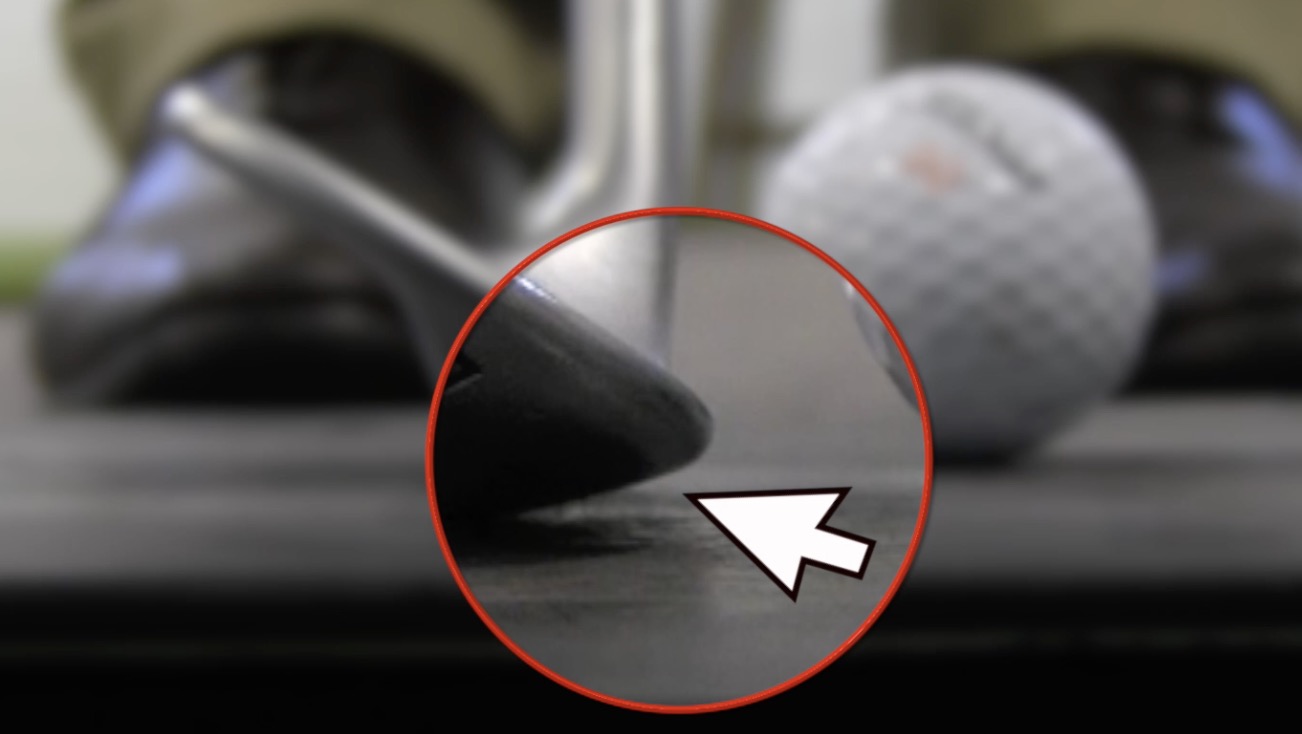
There are 3 types of bounce:
- Low Bounce – ideal for tighter lies and firm conditions, more sweeping swing style and glancing blows
- Mid Bounce – most versatile for different conditions, more neutral swing shapes
- High Bounce – ideal for softer sand and turf, steeper swings, more backspin and taking bigger divots
Club Selection
I don’t need to tell you that a high launch angle is crucial to getting that ball out of the bunker.
To get that high launch angle, choose a high-lofted club. I typically come at those bunker shots with a club that has a 58-degree loft. If you don’t have a lob wedge with that high loft, your highest loft wedge (usually a sand wedge around 54 degrees) will work.
Now, to make the most of that high loft, you need proper setup.
Setup
The setup for a greenside bunker shot is noticeably different from your regular golf setup. Here are the important elements you need to keep in mind.
Stability
For a greenside bunker shot, you’re dealing with an entirely different turf. So, when setting up your shot, the first thing you want to think about is creating a solid base for yourself. This will help you stay balanced and steady in the sand.
To create that solid base, take your stance just a little wider than you normally would. Flare your toes out slightly and put a bit of bend your knees. You should feel strong and stable in this position.
Pressure in the Feet
If you’ve been reading my other articles or watching our instructional videos, you know how important it is to think about the placement of pressure in your feet. The distribution of pressure influences the motion and power of your swing. In the case of the bunker shot, controlling the pressure in your feet is key to controlling where the club enters the sand.
For this shot, you want 60%-70% of the pressure to be on your front foot. Since you are in a position with your knees slightly bent, it may help to think of feeling that pressure in the lead thigh.
Now, you probably know that for most other shots, the pressure shifts throughout the swing. That is not the case for the bunker shot. You want to feel that 70% pressure in the lead thigh and keep it there throughout the swing.
Ball Position
Hopefully, you’re used to placing the ball in the center of your stance on a regular golf setup. For this shot, you want the ball slightly forward of center. Think of where the logo is (or would be) on your golf shirt. Position your stance so that the ball is directly beneath that logo. This will help you reach that overall objective of hitting the sand first so the sand carries the ball onto the green.
Clubface Position
Finally, hold your club so that the club face is slightly open. In other words, if you are right-handed, aim your clubface—and your stance—a little to the left.
Now you’re setup for a great bunker shot. All you need now is the perfect swing motion.
Swing Motion
There are really only two important concepts to keep in mind when making a bunker shot.
First, as you swing away from the ball, you want to keep the clubhead outside your hands. If you saw my video on chipping shots, you’re familiar with the concept of “the catcher’s mitt.” Imagine yourself standing in the batter’s box. When you swing back, visualize the clubhead moving into the imaginary catcher’s mitt.
Second, when you swing through, allow the clubhead to splash through the sand. It may feel counter-intuitive at first. After all, you’re trying to move the ball . . . and you’re trying to move it up and out of tricky lie. Kicking some sand around may not feel like the solution.
LEARN THESE 5 TIPS EVERY GOLFER SHOULD KNOW
But trust me: If you focus on throwing sand onto the green, the sand will take the golf ball with it.
Specific Sand Trap Shots
When you hit it in a sand trap you can be presented with a number of different situations. The sand could be wet, you could be plugged or completely buried by the sand, or maybe the sand trap isn’t filled with enough sand.
For each of these situations you will need to hit a different form of sand trap shot. First, let’s start with if the sand is wet.
If the sand is wet that means it’s much heavier and more dense than regular dry sand should be. The best way to deal with this when hitting a sand trap shot is to open the clubface more than you normally would and “splash the sand” onto the surface of the putting green. Generating more swing speed than you usually would hitting a normal bunker shot.
This will allow the ball to get up in the air and will help generate more controllable results.
If you’re hitting out of a sand trap that has little to no sand, almost feeling like hard pan then we need to do just the opposite. From your original opened clubface, close the face down to almost a neutral position and play the shot as it is going to land and release on the putting green.
If you are presented with a golf ball in a sand trap that is buried in the sand or looks like a “fried egg” then you should approach the golf ball with a slightly opened face from neutral. After this, you should try and once again “splash the sand” out of the sand trap but this time trying to hit directly behind the ball.
This will allow for the ball to pop up and get out of the sand trap successfully.
How to Play Wet Sand
If you’re presented with a situation where your ball has come to rest in the bunker where the sand is wet there are a couple different ways in which you can play the shot.
Firstly, if there is water coming up onto your shoes when you take your stance then you are able to take relief and place the ball in a spot of the bunker where there is sand that isn’t wet.
If the bunker is dry and there isn’t a tall lip in front of you then your best option might be to take out your hybrid and “putt” the ball.
This golf club selection could be the easiest way for you to get your ball out of the bunker and close to the hole.
The traditional way to play a bunker shot from wet sand is for you to take out your sand wedge and take your normal stance and make sure the face is more square with the ball. From this, you can hit your regular greenside bunker shot.
Greenside Bunker Shot: A Cheat Sheet
That was the comprehensive version of How to Hit Greenside Bunker Shots. Now, let’s recap and bring it back to the basics so you have an easy checklist to review greenside bunker shots on the golf course.
Overall Objective
- Throw sand out onto the green. The sand will take the ball with it.
Club Selection
- Choose a high-lofted club, like a lob wedge or sand wedge
Setup
- Make your stance a little wider than normal.
- Flare your toes out slightly.
- Slight bend in the knees.
- Feel 60%-70% pressure in the lead thigh.
- Position ball slightly forward of center in your stance.
- Aim your clubface and stance slightly to the left of the target (for a right-handed golfer).
Motion
- As you swing back, keep the clubhead outside your hands. (Think “catcher’s mitt.”)
- Allow the clubhead to splash through the sand just behind the ball.
The more your practice this technique, the less you’ll have to think about incorporating all these steps and the simpler these solutions will feel. Before you know it, you’ll have eliminated the all-to-common fear of the greenside bunker shot.
Does My Approach Change With a ?
The simple answer is yes, as a is going to be a much longer , played with a longer iron (or even a hybrid or wood).
Here is the quick setup to master the in 3 simple steps:
- Take one more than usual (if it’s a 7-iron length for you, grab a 6-iron)
- Take a 3/4 length
- Hit the first, then the
That’s it. Now you can play both types of sand shots with confidence.
Was this Helpful?
Have you tested these tips? Do you have any questions? Anything you read here that you disagree with?
Let us know in the comments. We’re always here to answer your questions – or engage in a friendly golf debate!
For more tips and golf news, follow us on Instagram and Facebook and subscribe to our YouTube channel. We’re constantly adding new content designed to help you play better golf.


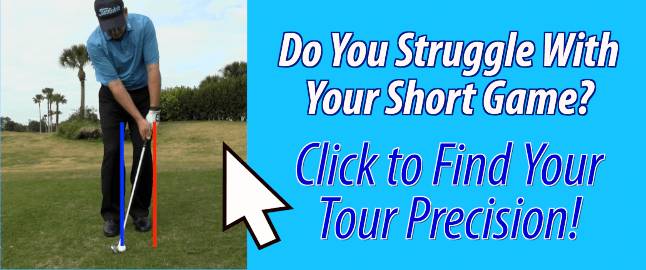
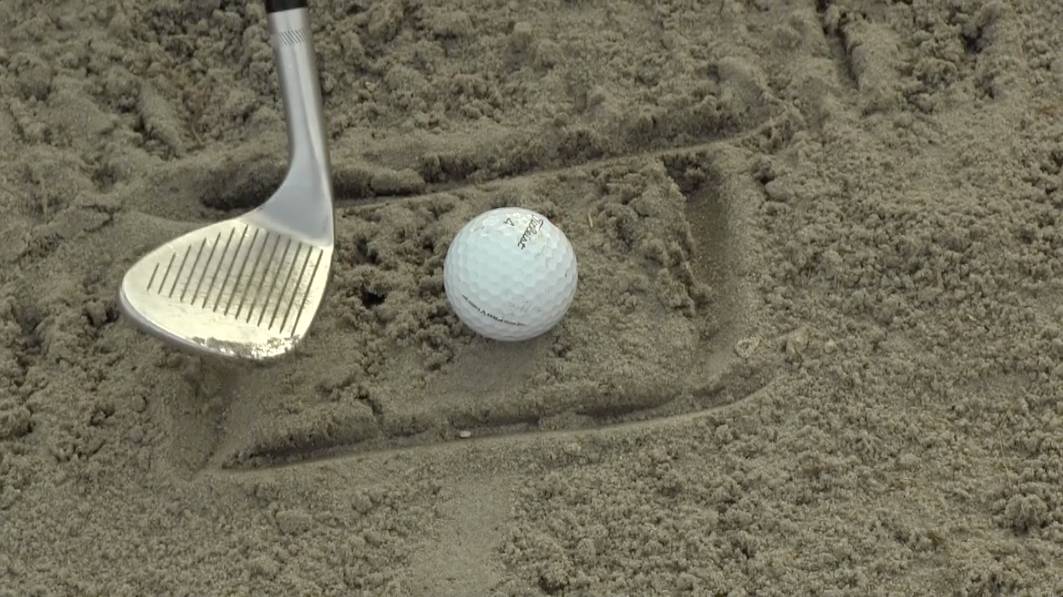
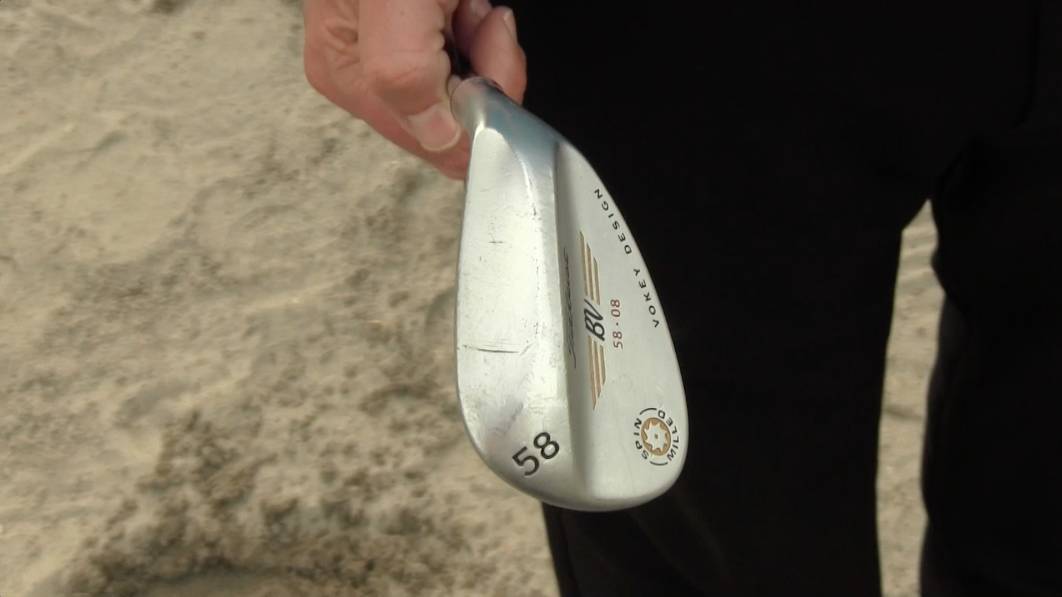
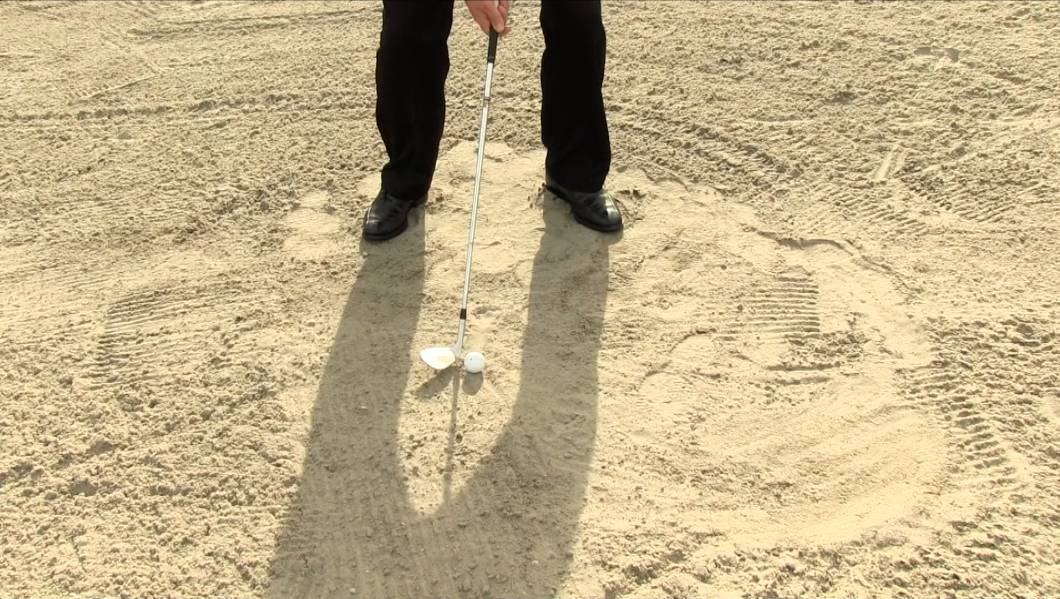
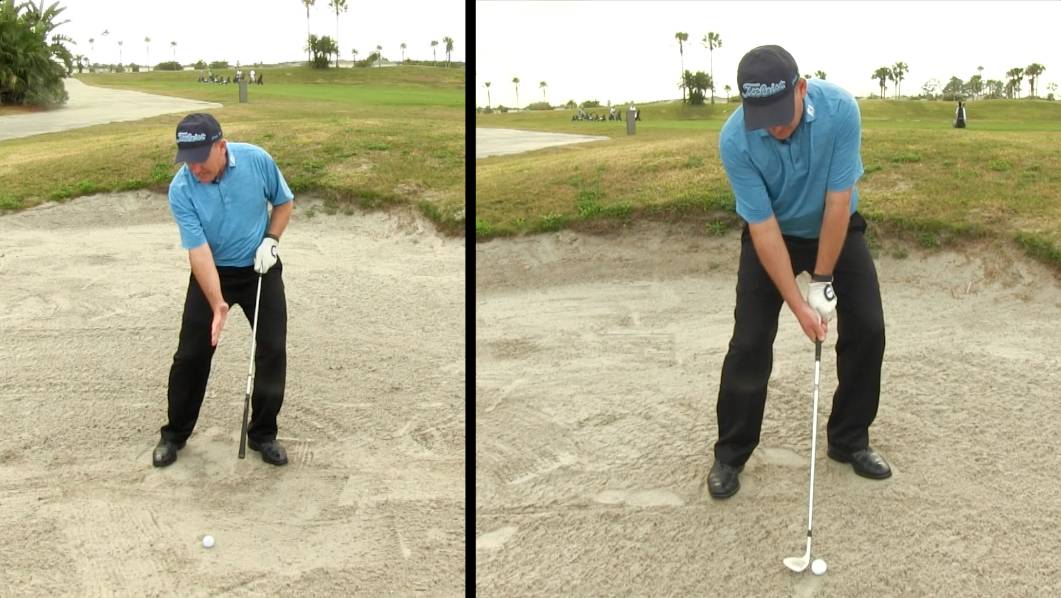
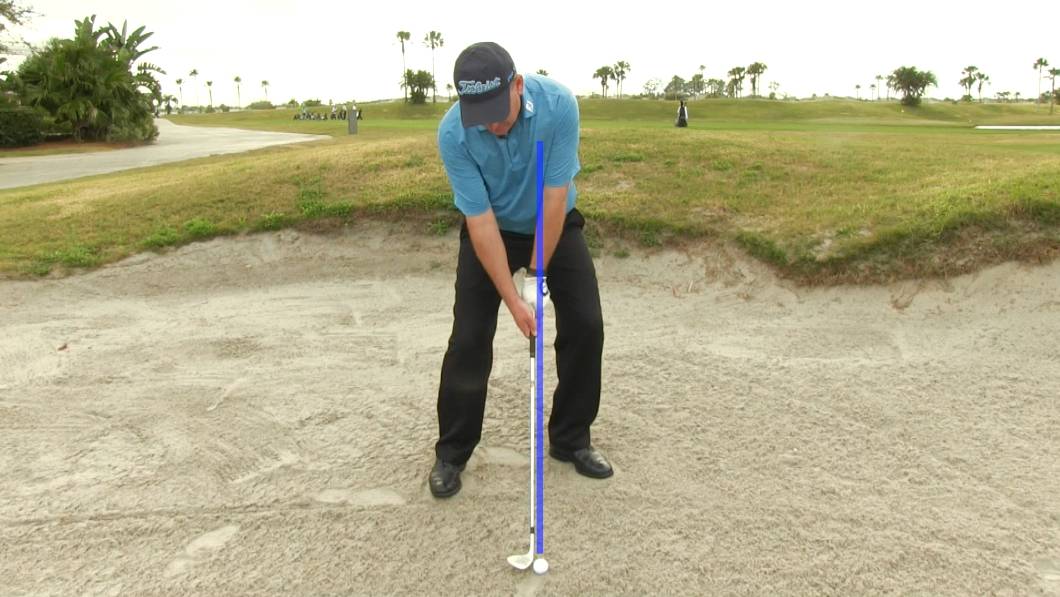
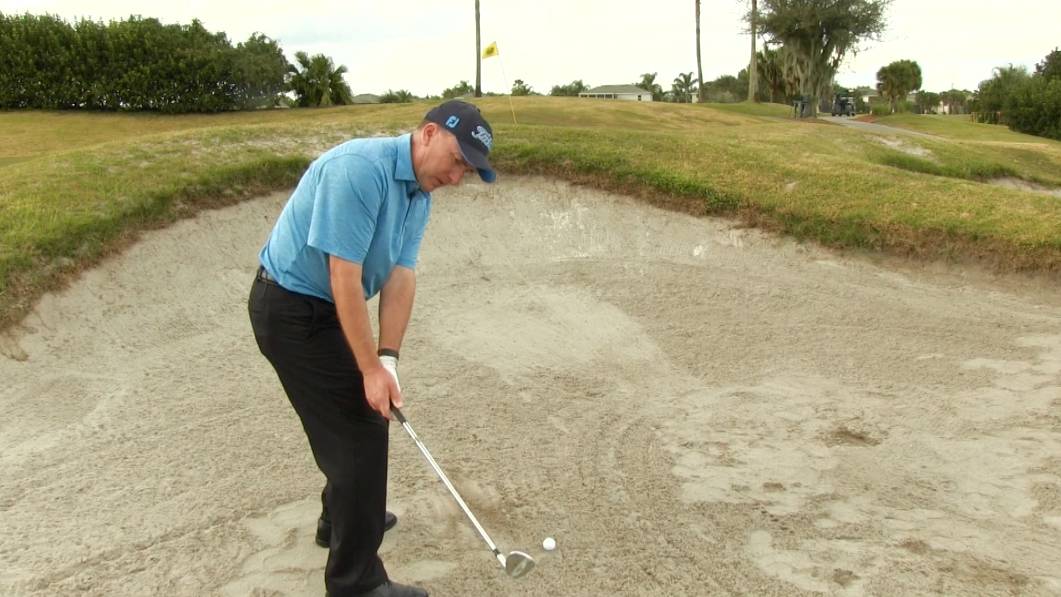
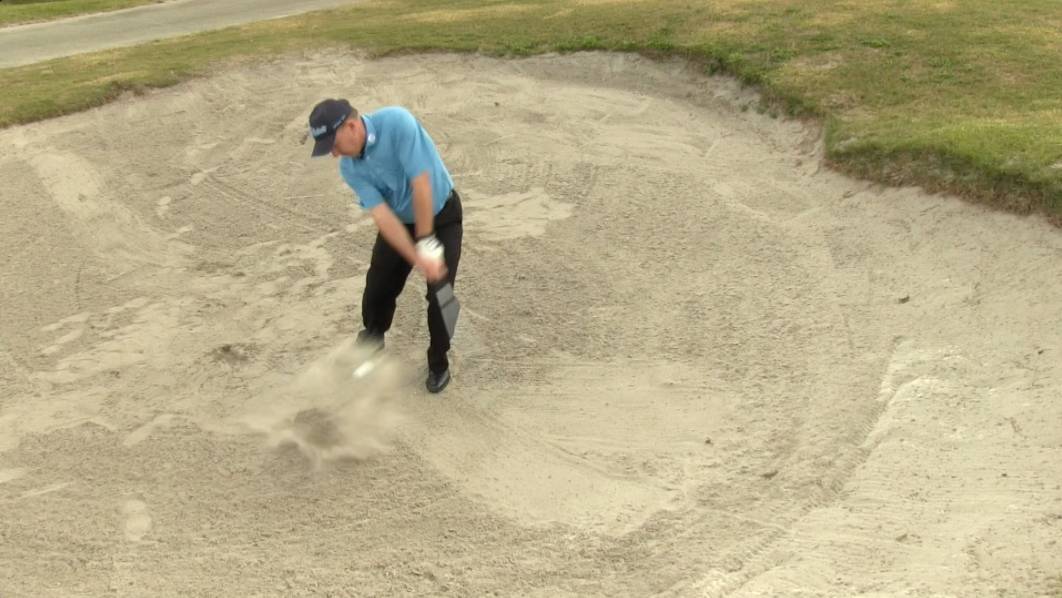
I love your instructions on chipping and sand play. One question though, “Do you watch the sand behind the ball, or the ball itself.” This totally baffles me when I am in the sand.
Thanks for your question and supporting our coaching. I hope you are finding it helpful.
I suggest you focus on the sand slightly behind the ball. Think in terms of throwing a “dollar bill” size area of sand out onto the green. This will help your focus be on throwing the sand vs the ball which will be a great help.
Let us know how it goes!
I can hit a flop shot off grass but sand petrifies me. I have weight forwarded et al and either end up hitting too far behind ball (1-2 in behind sand line behind ball) or I am skulling it out if bunker. They seem to be contrary problems but are consistent- more often than mot skulling.
Ken,
Bunker shots scare many, many golfers. Here is a great video we did which may help https://youtu.be/yMg-MbiIyJg
Great information (as always). One question though – when playing further back in the deadpan kind of sand, do you still want to use a club with a lot of bounce? I’ve always used an iron with less bounce on this kind of lie since more bounce has always led to shallower club face depth in the deep, soft, sand.
How about some tips for hitting a bunker shot from a downhill lie in the back of the trap?
Jay,
The key is to match your shoulders to the angle of the slope as much as possible. In the motion, try to swing down and along the slope line. Hope that helps!
Great question Mitch. When the ball is on deadpan you want to keep the face more square and use a club with less bounce. Hope that helps.